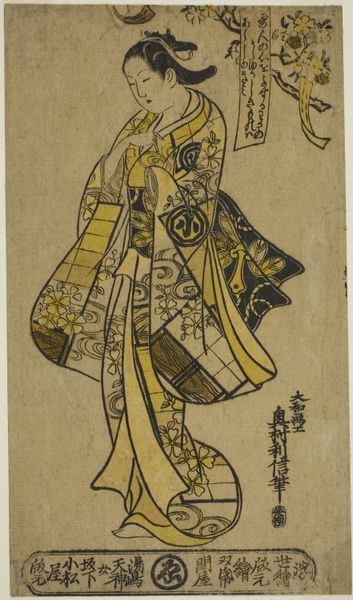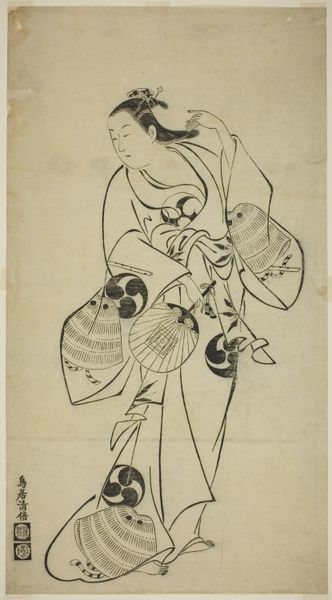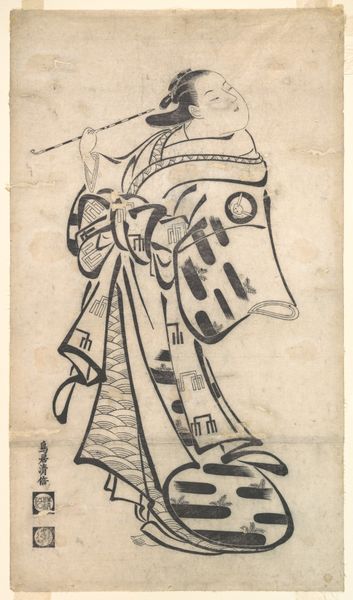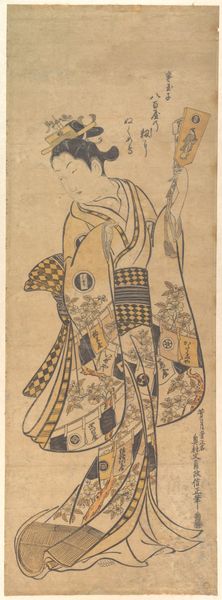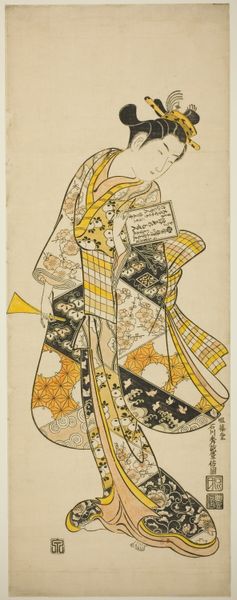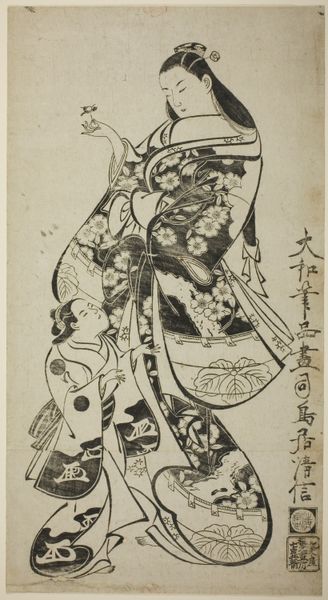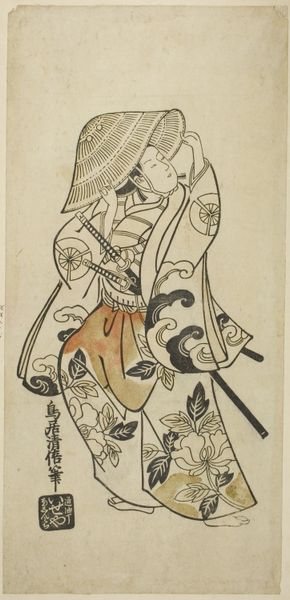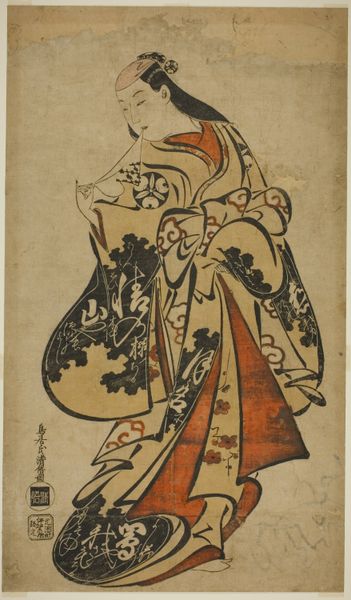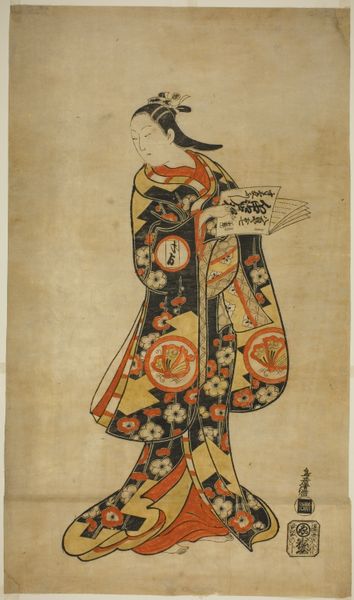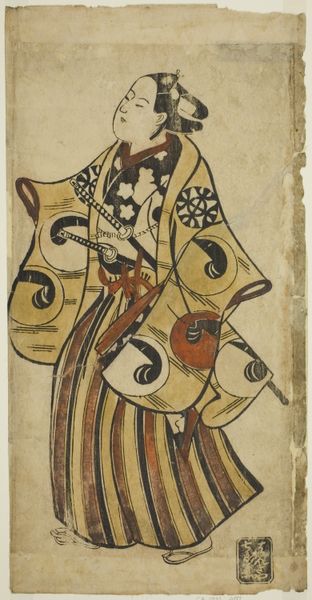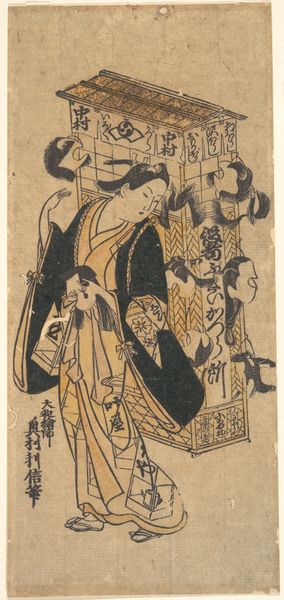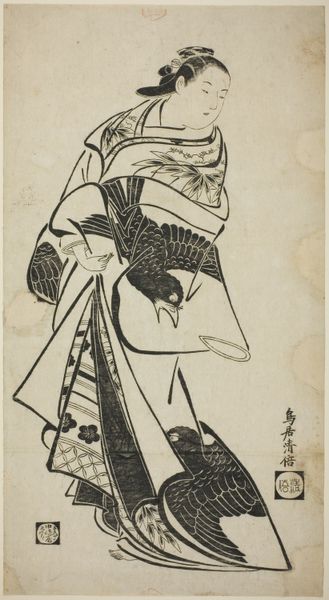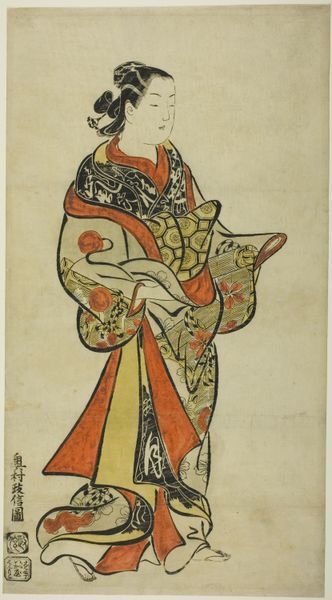
The Actor Nakamura Gentaro as a woman playing battledore and shuttlecock c. 1704
0:00
0:00
print, paper, ink, woodcut
#
portrait
# print
#
asian-art
#
ukiyo-e
#
figuration
#
paper
#
ink
#
woodcut
Dimensions: 57.3 × 32.0 cm
Copyright: Public Domain
Editor: This is "The Actor Nakamura Gentaro as a woman playing battledore and shuttlecock," a woodcut and ink print on paper by Torii Kiyomasu I from around 1704. I’m immediately drawn to the patterning of the kimono—it feels so bold, even graphic. What do you see when you look at this, in terms of its visual impact? Curator: What strikes me immediately is the interplay of line and form. The artist masterfully uses line to define the figure and the complex patterns of the kimono, which, as you noted, provides visual dynamism, though there's an equal commitment to filling in large expanses with unmodulated blocks of ink that creates dramatic tension and, structurally, flattens the image, forcing our gaze to acknowledge its two-dimensionality. The almost diagrammatic floating shuttlecock near the top only accentuates that. Editor: That flattening effect is interesting. So, the artist is playing with our perception, almost drawing attention to the artifice of the print itself? Curator: Precisely. Note also how the patterns on the kimono, seemingly random, guide the viewer’s eye through the composition. These different squares operate independently as miniature worlds but collectively give a sense of flow. We see figuration depicted in a graphic, compressed, highly stylized manner, emphasizing the flatness of the plane and undermining the illusion of three-dimensionality. Editor: I hadn't considered how much the patterning directs the eye. I was focused on the overall impression. Curator: Consider too how the figure’s pose, combined with the subtle tilt of the head, affects the overall equilibrium. Is there a tension, perhaps a structural unease? Editor: Now that you mention it, yes, it is subtle, but she does look a bit off-balance. It keeps the image active, somehow. Curator: An active pictorial surface created through carefully balanced formal elements. We might consider the function and placement of negative space in activating this effect. Editor: Thinking about the composition in terms of balance and flatness gives me a totally new way to appreciate this piece. Thanks for sharing that! Curator: A close examination of form allows us to see beyond the subject matter and access the artist's intentions with greater clarity. I think that is why, today, my viewing experience feels more full.
Comments
No comments
Be the first to comment and join the conversation on the ultimate creative platform.
